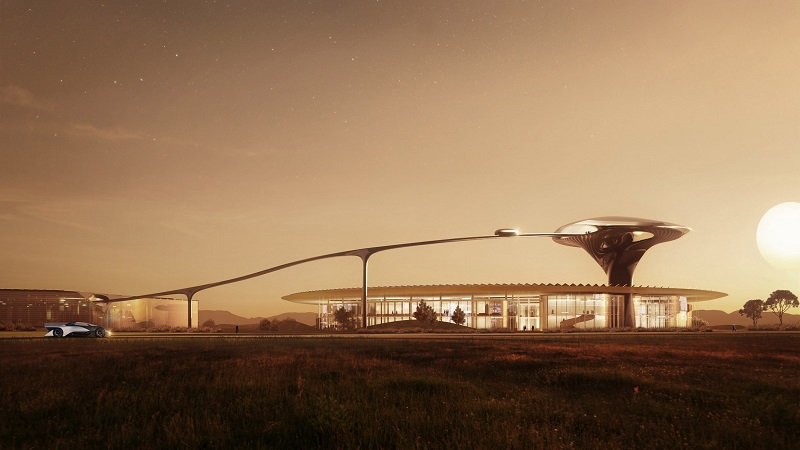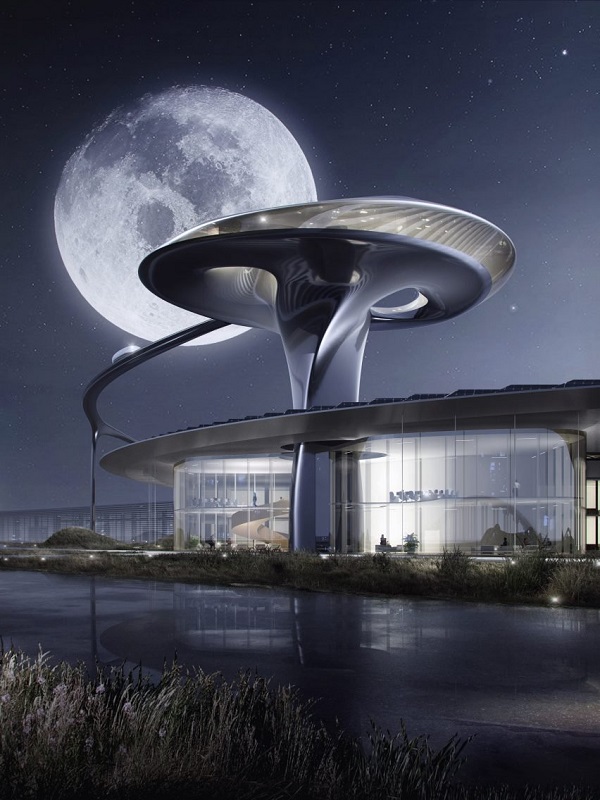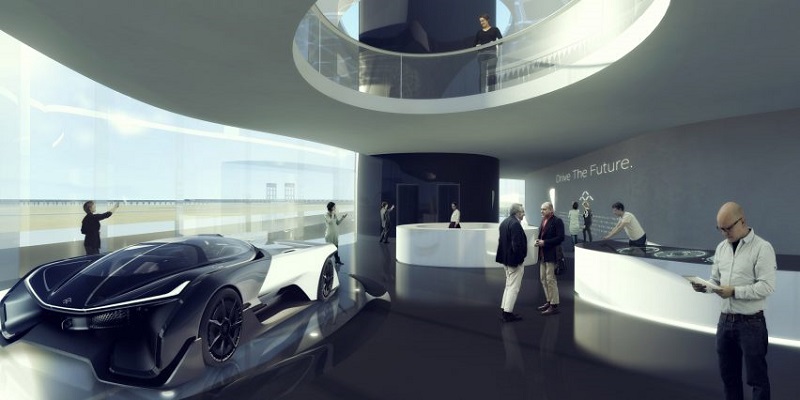Faraday Future, Mare Island
In July 2017, design firm MAD revealed the proposed campus for Faraday Future (FF) on Mare Island, which recently announced production of ‘the world’s fastest-accelerating electric car’.
The site, in Northern California adjacent to the Napa River, was recently positioned as a ‘zero-emission base’. It was formerly a naval base, and will support not only FF’s research, development, and manufacturing, but also an ongoing public programme and ecological restoration of the Napa’s banks.
The campus covers an area of approximately 130,000 sq. m, including 20,000 sq. m of buildings. MAD have designed an open concept campus with a unique structure taking into account FF’s science fictional ambition and mysterious surrealism..
MAD’s proposal consists of two low, metallic structures embedded within the site’s landscape. The user experience centre rises into a sculptural, reflective tower, the design of which allows clients to watch as their car is transported from the warehouse along the elevated light rail into the exhibition hall. The experience centre will be open to the public, with visitors able to observe the whole campus.
The double-height facility is punctured by a series of internal courtyards, maximising natural daylight, and providing employees with outdoor space. In line with the project’s ‘zero-emission, low energy’ ambition, the structures also have large roof overhangs, and operable glass façades that passively reduce solar gains and allow for natural ventilation.
The 'transparency' of the offices creates a direct relationship between employees and visitors, a working demonstration of broader social agenda.
The roofs are clad with solar power panels, with enough production capacity to support the entire campus’ daily operational demands. The experience tower is also equipped with wind-driven generators.
Content and images courtesy of MAD.
[edit] Find out more
[edit] Related articles on Designing Buildings Wiki
Featured articles and news
Gregor Harvie argues that AI is state-sanctioned theft of IP.
Preserving, waterproofing and decorating buildings.
Many resources for visitors aswell as new features for members.
Using technology to empower communities
The Community data platform; capturing the DNA of a place and fostering participation, for better design.
Heat pump and wind turbine sound calculations for PDRs
MCS publish updated sound calculation standards for permitted development installations.
Homes England creates largest housing-led site in the North
Successful, 34 hectare land acquisition with the residential allocation now completed.
Scottish apprenticeship training proposals
General support although better accountability and transparency is sought.
The history of building regulations
A story of belated action in response to crisis.
Moisture, fire safety and emerging trends in living walls
How wet is your wall?
Current policy explained and newly published consultation by the UK and Welsh Governments.
British architecture 1919–39. Book review.
Conservation of listed prefabs in Moseley.
Energy industry calls for urgent reform.
Heritage staff wellbeing at work survey.
A five minute introduction.
50th Golden anniversary ECA Edmundson apprentice award
Showcasing the very best electrotechnical and engineering services for half a century.
Welsh government consults on HRBs and reg changes
Seeking feedback on a new regulatory regime and a broad range of issues.



























